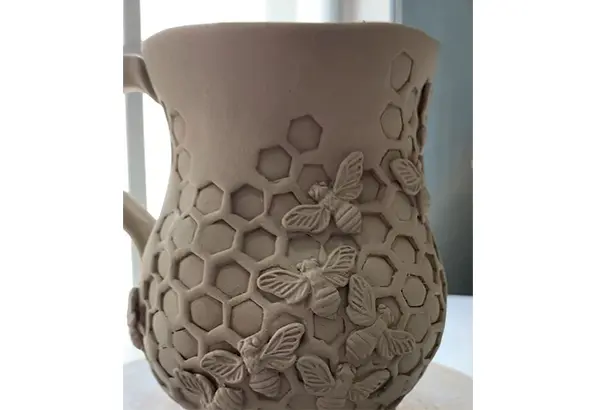In the preparation process of honeycomb ceramics,celluloseNatural cellulose fibers, such as wood pulp fibers, cotton fibers, or cellulose derivatives such as methyl cellulose, are key organic additives that play a crucial role in the core processes of forming, drying, and sintering honeycomb ceramics. They have a significant impact on the structural integrity, pore uniformity, and mechanical properties of honeycomb ceramics. The specific functions are as follows:
1、 As a pore forming agent: regulating the pore structure of honeycomb ceramics
The core feature of honeycomb ceramics is a large number of regularly arranged through pores (such as honeycomb ceramics used in automotive exhaust purifiers, with a pore density of hundreds of pores per square centimeter). These pores and micropores in the pore walls are crucial for their functions (such as filtration, catalysis, and insulation), and the primary role of fibers is to construct a pore skeleton:
Cellulose fibers are uniformly dispersed in the raw materials (ceramic powders such as cordierite and silicon carbide), and after forming, they will completely burn and decompose (producing CO ₂ and water) during the subsequent sintering process due to high temperature (usually 800-1600 ℃). The space they originally occupied will form connected micropores or pores, thereby increasing the porosity of honeycomb ceramics.
For example, in honeycomb ceramics for thermal insulation,celluloseDrilling can introduce more closed or semi closed pores, reduce heat conduction efficiency, and improve insulation performance; In honeycomb ceramics for filtration, the micropores left behind after cellulose decomposition can enhance the retention ability of particulate matter.
By controlling the amount of cellulose added, fiber length, and diameter, the porosity (usually 5%~20% added, porosity can be increased by 10%~40%) and pore size can be accurately regulated to meet different scenario requirements (such as automotive catalysts requiring high porosity to reduce airflow resistance, while load-bearing structures using honeycomb ceramics require moderate porosity to balance strength).
2、 As an adhesive and plasticizer: improving the formability and strength of the body
The molding process of honeycomb ceramics (such as extrusion molding and injection molding) requires high plasticity and strength of the body (maintaining a complex pore structure without deformation), and cellulose plays a role in bonding and plasticizing during this process:
Enhance the bonding strength of the billet
The hydroxyl groups (- OH) in cellulose molecular chains can form hydrogen bonds with the hydroxyl groups on the surface of ceramic powders, "bonding" dispersed powder particles into a continuous network structure, avoiding the fragmentation of the green body due to external forces (such as extrusion pressure) during the molding process. For example, during extrusion molding, the raw material containing cellulose can more stably pass through the pores of the mold, ensuring the uniformity and integrity of the honeycomb pore walls.
Improve the plasticity and ductility of the billet
celluloseFibers themselves have a certain degree of flexibility and can be filled between ceramic powders to reduce friction between particles, making the body more prone to plastic deformation (rather than brittle fracture) under stress, making it easier to process into thin-walled and complex pore structures (such as the pore wall thickness of thin-walled honeycomb ceramics can be as low as 0.1mm, and the plasticizing effect of cellulose is key).
Enhance the strength of the green body
The strength of the unsintered green body (green body) after molding is relatively low. The fiber network formed by cellulose can significantly improve the flexural strength and impact strength of the green body, avoiding damage caused by slight collisions before handling and drying (especially for large-sized honeycomb ceramics, insufficient green body strength can lead to a significant decrease in yield).
3、 As a water retaining agent: reduce cracking during the drying process
Honeycomb ceramic bodies contain a large amount of water (water needs to be added to adjust plasticity during molding), and uneven evaporation rate of water during the drying process can easily lead to uneven shrinkage of the body, resulting in cracking (especially in areas with thin pore walls and complex structures). The water retention performance of cellulose can alleviate this problem:
Cellulose molecular chains have hydrophilicity, which can adsorb and retain water in the body, slow down the evaporation rate of water, and evenly dissipate water from various parts of the body (such as pore walls and corners), reducing internal stress caused by rapid local shrinkage.
At the same time, cellulose will form a layer of "gel film" at the initial stage of drying, further control the water evaporation rate, and cooperate with the gradient heating (low temperature slow drying → high temperature drying) process, which can greatly reduce the risk of cracking (this role is directly related to the application of cellulose in the drying of honeycomb ceramics, and is one of the core factors to improve the yield).
summary
Cellulose is a multifunctional additive in the preparation of honeycomb ceramics, serving as a pore forming agent to regulate the pore structure and determine its functional properties such as filtration and insulation; As an adhesive and plasticizer, it ensures the formability and strength of the green body, and guarantees the stability of complex pore structures; As a water retaining agent, it reduces drying and cracking, and improves production efficiency. Its function runs through the entire process from raw material mixing to finished product sintering, and it is a key material for balancing the structural integrity, functional effectiveness, and production feasibility of honeycomb ceramics.


TEL:+86 (0311) 8444 9786
Email:sales@double-bulls.com
Email:Export@double-bulls.com
Address:No.9 Weisi Road, Jinzhou City Eco-nomic Development Zone, Shijiazhuang City, Hebei Province.

Website

Brochure

Video